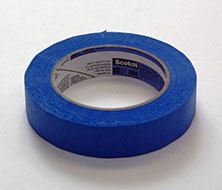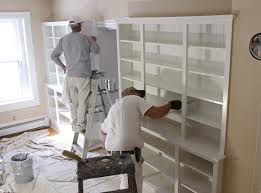Five Useful Tips for a Great Paint Job
Summertime is here and there probably isn't a better catch up time for those painting projects that you may have been putting off. This month I want to share a few of the handy tips that we use on all of our painting projects. The most time consuming part of any paint job is the prep work. It's often tempting to take some shortcuts when you're getting ready to paint. However, if you take the time to do your prep work properly you will be rewarded with a much higher quality and more beautiful result.
The first step may seem obvious.
- Clean walls before painting to remove any light dirt and dust particles.
Dirt and dust will not allow paint to properly adhere to the surface being painted. It will ruin the smooth surface of your paint job. Clean the walls with a duster and then go over the walls with a damp rag to remove any light dirt. - Use painter's tape to mask off any areas not being painted.

Painter's tape will save you a lot of frustration if you take the time to use it.This tape is really useful on trim and ceiling areas. It can be aggravating to move and climb ladders to reach those high spots only to get wall paint spots on your ceiling. Use good quality painter's tape! Sometimes using inexpensive tape is worse than using no tape at all. - Make sure you use the correct paint for the job.
It's very important to use the right kind of paint for the job at hand. Quite often this comes down to choosing a water based paint versus and oil based paint. More states are starting to prohibit the use of oil based paints due to disposal concerns. Water based paints are easily disposed of and clean up after the project is also easier. Be aware that you can use water based paint on top of oil based paint but not vice versa. - Make sure you purchase enough paint for the job.
When paint stores mix the color you chose, they use a machine to measure the correct amount of tint to add before mixing. To ensure each gallon matches, it is best to purchase as much paint as you will need the first time you buy. However, if you do need additional paint, make sure you go to the same store where you purchased the first cans of paint. Machines at different stores are each calibrated differently so there is no guarantee that the mix will be an exact match. - Make sure you use the correct brush or rollers for the job.
When using rollers, make sure you use the correct nap thickness for the surface you are painting. Rough surfaces such as brick or cement will require thicker naps than wall surfaces. Brushes are made for the type of paint they are applying. You can find brushes that claim to be good for both oil and latex based paints. However, it is better to use a latex brush for latex paints and an oil brush for oil based paints.


